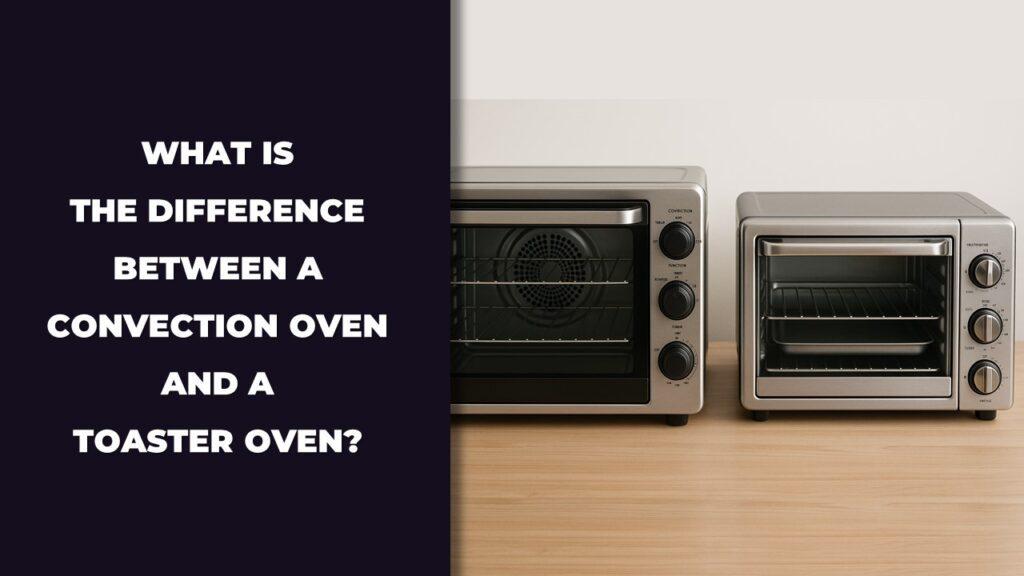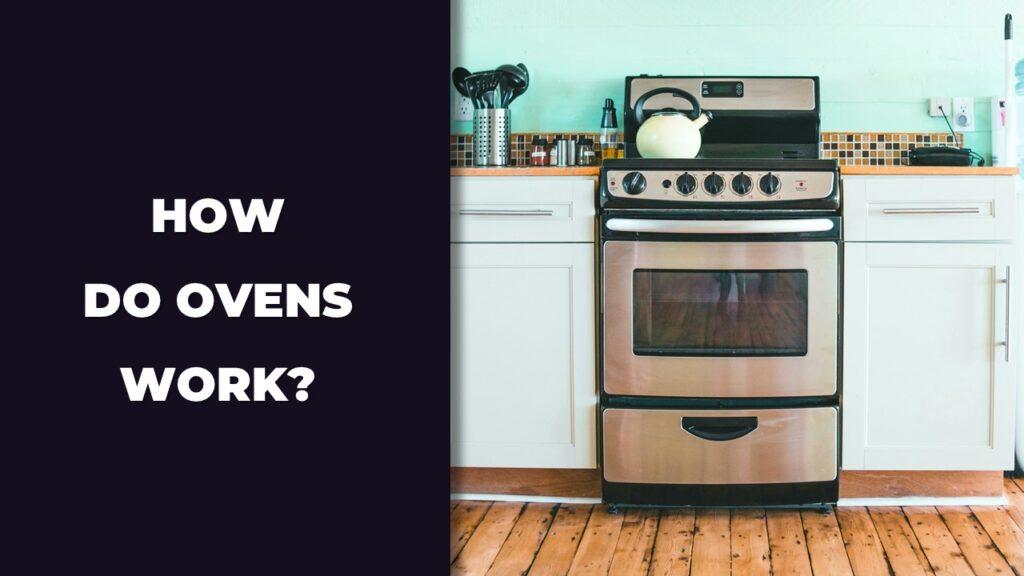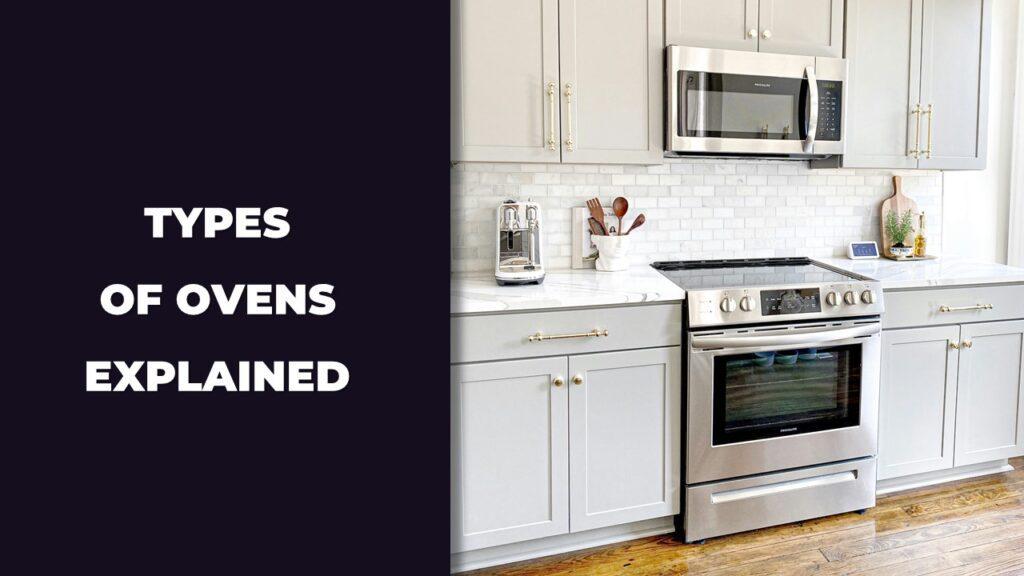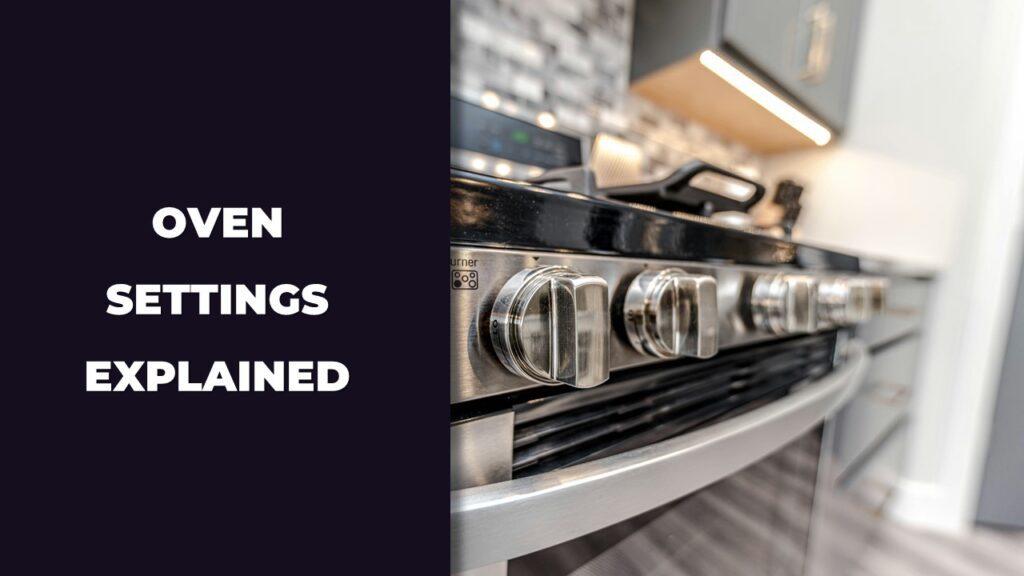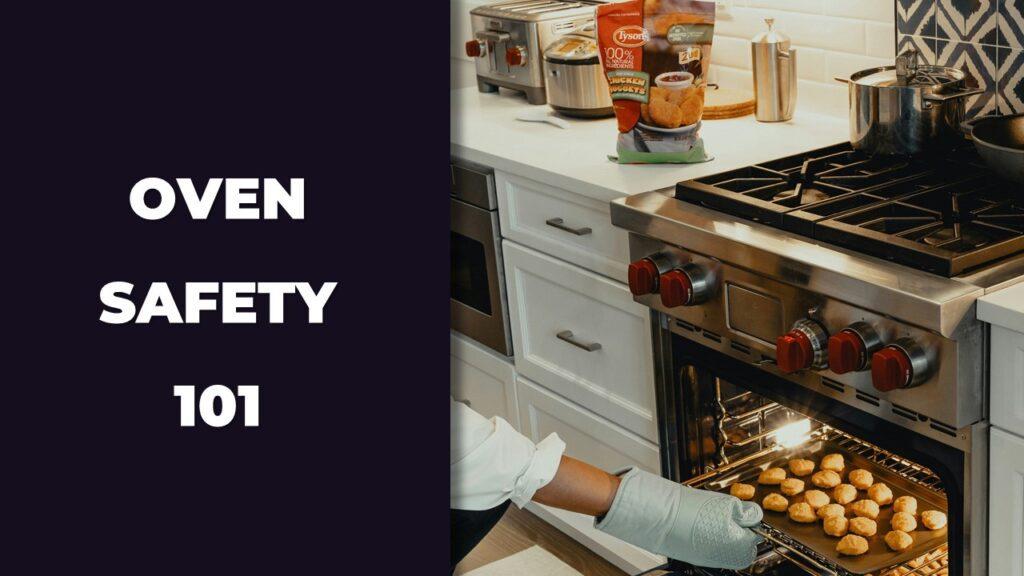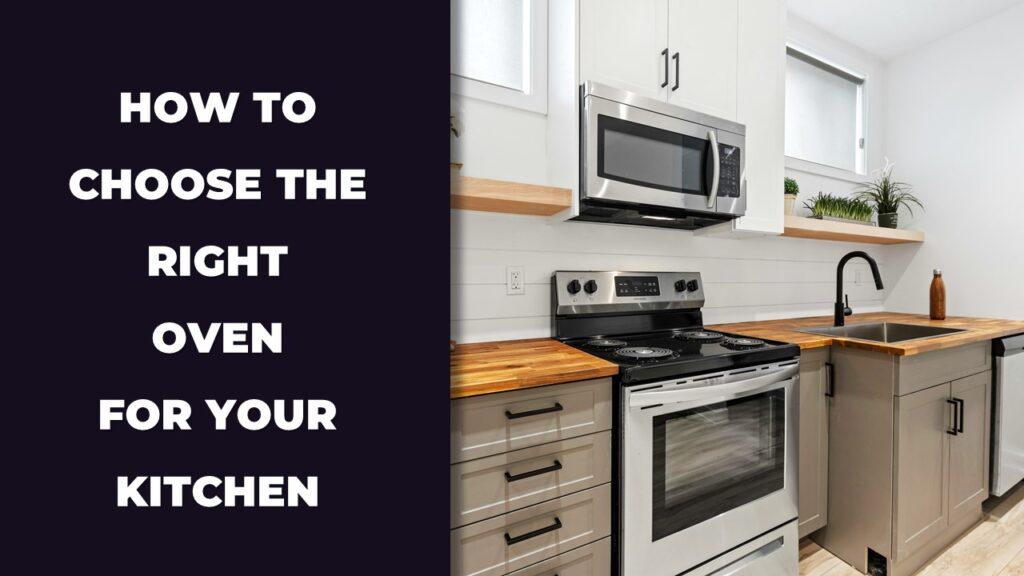
A French door oven is an oven that opens from the center, with two doors that swing outward, just like a French door refrigerator. This design gives you easier access to the inside, saves space in front of the oven, and makes it simpler to handle heavy dishes. It’s often found in wall ovens or double oven setups, and it’s a favorite for both its style and convenience.
We’ll walk you through how these ovens work, their types, key benefits, and who they’re best for. You’ll also find tips to help you decide if it’s the right fit for your kitchen.
How Do French Door Ovens Work?
A French door oven works by using two side-swing doors that open from the center, giving you full access to the oven cavity without having to reach over a hot drop-down door. Most models use the same heating elements and cooking functions as regular ovens, but the door style changes how you interact with the appliance, making it easier to reach inside, especially when handling heavy dishes.
Here’s how the design makes everyday cooking more practical:
- Two-Door Swing System: Each door opens to the side. Some models are built so that when you pull one handle, both doors open together.
- Improved Visibility: With the doors open wide, you get a clear view inside the oven without leaning forward.
- Standard Heating Tech: Most French door ovens come with the same bake, broil, roast, and convection settings found in traditional ovens.
- Wall-Mounted Convenience: These ovens are typically installed at eye or waist level, making it easier to load and unload food without bending.
- Safe and Smooth Operation: The doors are built with sturdy hinges and soft-close features to prevent slamming and heat loss.
Key Features That Set French Door Ovens Apart
French door ovens stand out for their easy access, sleek look, and space-saving swing doors that work better in tight kitchens or for users with limited mobility. They combine everyday practicality with modern design in a way that makes them a favorite for many homeowners.
Dual Door Accessibility
This is the biggest reason people switch.
- Easy Reach: You don’t have to bend over a hot door to check your food. Just open both doors and reach in comfortably.
- One-Hand Operation: Many models let you open both doors with one handle. Handy when your other hand’s holding a casserole or cookie tray.
- Safer Access: You can get closer to the oven interior without leaning or twisting awkwardly, which helps reduce spills or burns.
Space-Saving Door Swing
Traditional oven doors drop down and take up floor space. French doors swing out to the sides.
- Better Fit in Small Kitchens: Great for galley layouts or narrow kitchens where every inch counts.
- Less Obstruction: When the doors open, they don’t block the path in front of the oven. That means more room to move around, especially when cooking with others.
Ergonomic And Safe Design
No need to crouch or reach over hot surfaces.
- Back-Friendly: Lifting a heavy pan is easier when you’re not stretching over a drop-down door.
- Mobility-Friendly: These ovens are popular among people with back pain, arthritis, or those who use wheelchairs.
- Smooth Mechanics: Many have soft-close or slow-swing hinges that feel solid and prevent slams.
Stylish, Modern Look
These ovens don’t just work well, they look good too.
- Built-In Appeal: Most French door ovens are wall-mounted, giving your kitchen a built-in, high-end feel.
- Premium Finish Options: Stainless steel, matte black, custom panels—there’s a look for every kitchen.
- Design Focal Point: The side-opening doors create a balanced, symmetrical look that draws the eye.
Different Types Of French Door Ovens
French door ovens come in a few styles, including single wall ovens, double oven setups, and microwave combo units. All of them share the same door design, but they differ in size, function, and how they fit into your kitchen layout.
Each type has its own purpose depending on your cooking needs and space:
Single French Door Wall Oven
A single French door wall oven has one oven cavity with two side-swing doors. It’s built directly into the wall at about chest or waist height, making it easy to access without bending.
- Great for daily use: Enough space for most meals and baking needs.
- Saves space: Takes up less room than a range and gives you freedom to place your cooktop elsewhere.
- Streamlined design: Clean look that works well in minimalist or modern kitchens.
Double French Door Oven System
This setup includes two oven cavities stacked on top of each other. Each oven has its own set of French doors, which makes it perfect for busy households or frequent entertainers.
- Cook multiple dishes at once: Roast meat in one and bake dessert in the other.
- Independent controls: Different temperature settings for each oven.
- Bigger footprint: Needs more vertical space, but gives you double the cooking flexibility.
French Door Oven + Microwave Combos
These units combine a French door oven with a built-in microwave, usually in a stacked configuration. They’re great for small kitchens or anyone who wants to save counter space.
- Space-efficient: Replaces two appliances with one sleek unit.
- Multifunctional use: Use the microwave for quick reheating and the oven for full meals.
- Modern features: Many come with convection microwave options and smart tech.
Pros And Cons Of French Door Ovens
French door ovens are popular for their user-friendly design, stylish appearance, and flexibility, but they’re not perfect for everyone. Like any appliance, they come with both advantages and trade-offs.
Let’s break it down clearly:
Pros
- Easier Access: Side-opening doors make it easier to reach in, especially for people with back or mobility issues.
- Space-Friendly: Doors don’t swing downward, which helps in tight kitchens and reduces crowding.
- Modern Style: Adds a professional, high-end look to any kitchen setup.
- Safe Design: No bending over a hot door, reducing risk of burns and spills.
- Good for Aging in Place: Seniors and anyone planning to stay in their home long-term will appreciate the accessibility.
Cons
- Higher Price Tag: These ovens usually cost more than standard models with drop-down doors.
- Needs Side Clearance: The doors swing out, so you’ll need space on both sides.
- Fewer Options: Fewer brands and sizes to choose from compared to traditional ovens.
- Lower Oven Access (Double Models): In double oven setups, the bottom oven may still be a bit hard to reach for some users.
French Door Oven Vs Traditional Oven
The biggest difference between a French door oven and a traditional oven is how the doors open. A French door oven opens from the center with two side-swinging doors, while a traditional oven has one large door that pulls down from the top. This difference affects how much space you need, how easy it is to access your food, and where the oven can be placed.
Here’s how they compare in practical ways:
Door Functionality And Clearance
- French Door: The doors open out to the sides, giving full access without bending over a hot panel. Perfect when working with large pans or heavy dishes.
- Traditional Oven: The single door drops down. You may need to lean over the hot surface to reach in, which can be uncomfortable or risky if you’re carrying something heavy.
- Space Needs: French door ovens need a bit of clearance on either side for the doors to swing open fully, while traditional ovens need space in front for the door to drop.
Design And Placement Flexibility
- French Door: Often installed as wall ovens, giving you freedom to place your cooktop separately. Good for kitchens with custom layouts or tight corners.
- Traditional Oven: Commonly found in ranges or under-counter setups. Placement is more fixed, often tied to the location of the stove.
- Aesthetic Appeal: French door ovens tend to have a cleaner, more modern look. They often act as a design feature in high-end or stylish kitchens.
Cooking And Convenience Features
- Functionality: Both oven types usually come with the same cooking features like convection, broil, self-clean, and smart controls.
- Convenience: French doors are easier to open with one hand, especially helpful if your other hand is busy. Some models open both doors at once with a single pull.
- Cleaning and Maintenance: Wall-mounted French door ovens are easier to clean since you don’t have to crouch down to wipe them out.
Who Should Consider A French Door Oven?
If you’re someone who values easier access while cooking, a French door oven might be the right fit for you. The side-opening doors let you get closer to your food without reaching over a hot surface. That small change can make a big difference—especially if you’re lifting heavy pans or baking multiple times a week.
These ovens are also a great choice for people with back issues, limited mobility, or those planning to age in place. Since they’re often installed at chest or waist height, you don’t have to bend or kneel to use them. Many models are designed with one-hand operation too, so you can open both doors while holding a dish.
If your kitchen is a bit tight or you’re reworking your layout, a French door wall oven gives you more freedom. It looks clean and modern, saves space in front of the oven, and blends well with both classic and contemporary designs. It’s a smart upgrade for convenience and style.
Are French Door Ovens, Dutch Ovens, And French Ovens The Same?
No, French door ovens, Dutch ovens, and French ovens are not the same—they serve very different purposes in the kitchen. A French door oven is a wall or built-in appliance with two side-opening doors, while a Dutch oven and a French oven are heavy, lidded pots used on the stovetop or in the oven.
Here’s a quick breakdown to clear up the confusion:
- French Door Oven: A large electric or gas oven built into a wall or range. It has two doors that swing outward from the center for easier access.
- Dutch Oven: A thick, usually cast iron pot with a tight-fitting lid. It’s used for slow-cooking, stews, soups, and baking bread.
- French Oven: Basically the same as a Dutch oven, but typically coated with enamel. It’s often more colorful and marketed under brands like Le Creuset or Staub.
These items share similar names, but they don’t do the same job. One cooks your whole meal, the others cook what’s in the meal.
Expert Tips Before Buying A French Door Oven
Before buying a French door oven, check how much space you have on either side of where the oven will go. The side-swing doors need clearance to open fully, so if your oven will be near a wall or cabinet, make sure it won’t block the door. Also, because most of these ovens are built into the wall, think about how high or low you want it for easy access.
Pay attention to how the doors operate. Some models let you open both doors with just one handle, which is helpful when your hands are full. It’s also worth looking at the oven’s size and features. Do you need a double oven? Do you want extras like convection baking, Wi-Fi, or an air fry mode? These things make a difference in daily use.
Lastly, consider the brand and long-term support. French door ovens aren’t the cheapest, so pick a model with good reviews, reliable parts, and customer service that’s easy to reach if anything goes wrong. Think of it as a kitchen upgrade that should make cooking easier—not more complicated.
Final Thoughts
A French door oven is worth it if you’re looking for better accessibility, modern design, and a smarter use of space in your kitchen. The two-door setup lets you reach into the oven without bending over a hot panel, which makes everyday cooking feel safer and more comfortable. It’s especially helpful for anyone with mobility concerns or a compact kitchen layout.
These ovens don’t just work well—they also look good. The sleek, side-opening doors add a designer touch and fit into both modern and classic kitchen styles. Whether you go for a single wall oven or a double setup, you’ll enjoy more flexibility and better visibility while cooking.
While French door ovens tend to cost more upfront, many people find the added convenience, space-saving benefits, and eye-level installation worth the price. If you value ease of use, comfort, and a clean layout in your kitchen, a French door oven is a smart upgrade.
Related FAQs
Are French Door Ovens More Expensive Than Regular Ovens?
Yes, French door ovens usually cost more due to their unique design and premium construction. Prices can vary by brand, size, and features.
Can You Install A French Door Oven In Any Kitchen?
Yes, but the oven needs space on both sides for the doors to swing open fully. Wall mounting is also required, so check your cabinet layout.
Do Both Doors Open Together?
Most French door ovens are designed with linked doors that open at the same time using one handle. Some models may require separate pulls.
What Brands Make The Best French Door Ovens?
Top-rated brands include GE Café, Viking, Monogram, and Electrolux. These brands offer reliable performance and helpful support.
Are French Door Ovens Energy-Efficient?
Yes, many French door ovens are built with energy-saving features like convection cooking and quick preheat settings to reduce energy use.
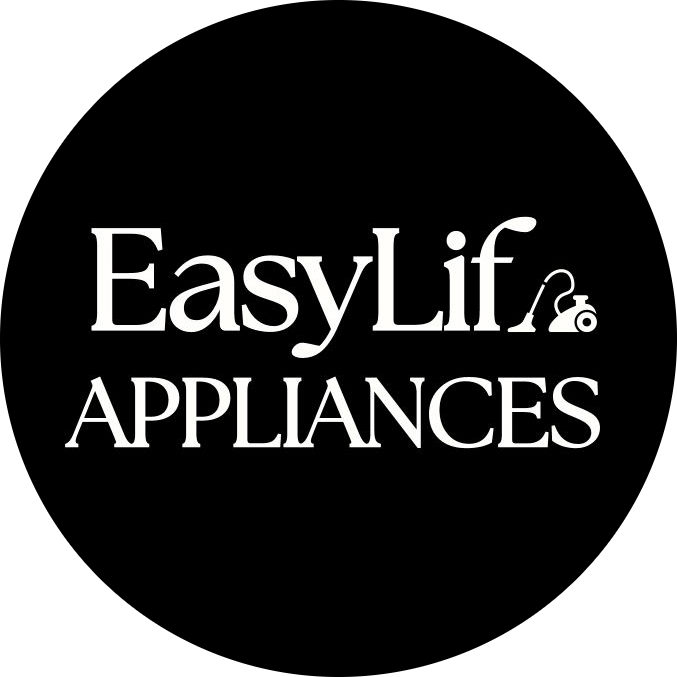
At our core, we’re a group of passionate households and gardening tools and appliances users and enthusiasts. We dive deep into the world of tech, especially when it’s about your household or gardening electric items. We try to provide as much value to the readers with our information and how to blog articles as possible. For affiliate articles our honest and transparent reviews of essential tech products are rooted in real-world experience. We take great satisfaction in offering unbiased evaluations, ensuring that you can make informed decisions when investing in your desired techs.

